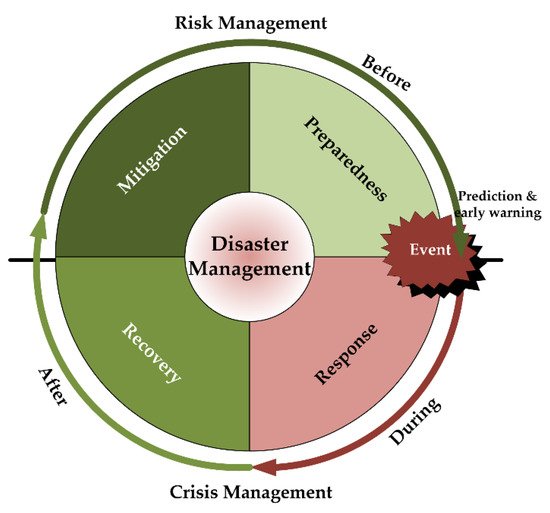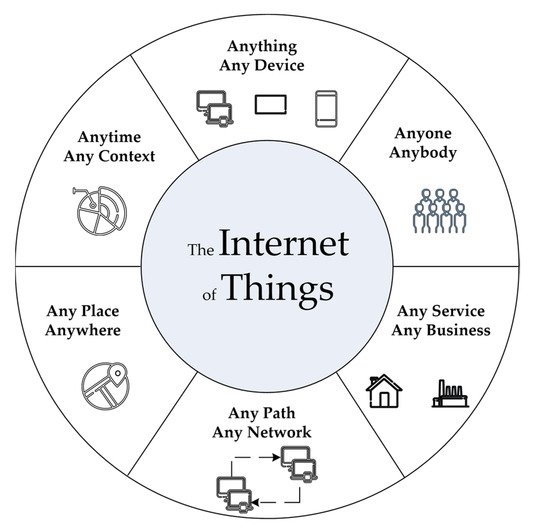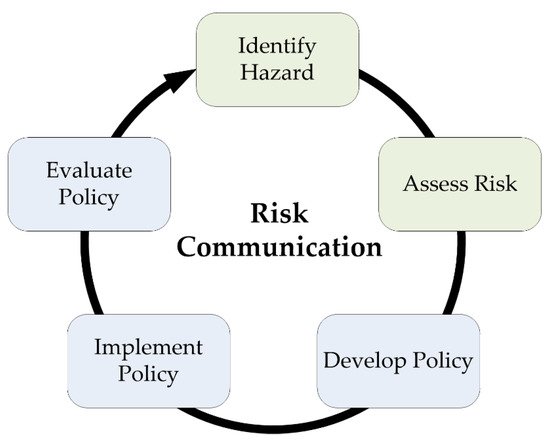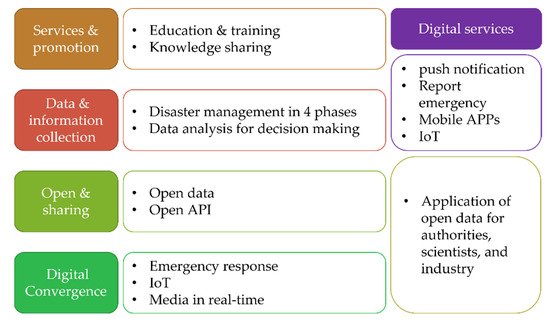You're using an outdated browser. Please upgrade to a modern browser for the best experience.
Please note this is a comparison between Version 1 by Y. F. Lin and Version 2 by Nora Tang.
Taiwan is in a hazard-exposed area where people often suffer through typhoons, earthquakes, and landslides, and must face the challenges of environmental and climate changes in ongoing and future developments. Taiwan has implemented an integrated and interdisciplinary project, which is titled Civil IoT Taiwan, for better disaster risk management and risk communication with all stakeholders by cooperating closely with authorities, scientists, and industry.
- Internet of Things (IoT)
- security governance
- environmental sustainability
1. Trends in IoT Development
1.1. Definition and Development of the IoT
The IoT was proposed in “The Road Ahead” by Bill Gates in 1995 [1][8] and has been in use since 1999 [2][9]. It defines the evolution of the internet where computing devices (including computers, laptops, tablets, and mobile phones) can be embedded in everyday objects to send and receive data [2][3][9,10]. With the development of the Internet and computer science, the IoT is not just a network of computing devises but has also evolved into vehicles, home appliances, toys, cameras, medical instruments, buildings, and industrial systems for sharing information and interacting with each other. Today, the IoT can be grouped into three categories: (1) people to people, (2) people to devices, and (3) devices to devices (Figure 1) [3][4][10,11].
1.2. Application of the IoT in the Environmental Field
The IoT has become one of the most critical technologies of the 21st century and can connect and interact with many everyday objects. Nevertheless, with the development of some technologies, i.e., access to low-cost sensor technology, storage on cloud computing platforms, machine learning and analytics, and conversational AI, the IoT can be applied for collecting big data and calculating results to provide relevant information about the operation, performance, and environmental conditions that people want to monitor and control at a distance [5][12]. With monitoring, measurement, data collection, and analysis, the IoT benefits environmental sustainability, such as resource management, ecosystem preservation, energy efficiency, and security governance. In addition, IoT-based environmental monitoring provides information for improving life quality, preventing natural disaster risks, facilitating disaster risk communication, and adjusting water resource management. Today, IoT is changing aspects of our everyday lives, and the data it collects from different sensor areas are analyzed and applied in practice smartly and conveniently to increase environmental sustainability, social security, and economic efficiency.
2. Disaster Risk Management and Security Governance
2.1. Disaster Risk Management
Disaster management aims to reduce or avoid potential loss of properties, livelihoods, and lives from hazards. Preventing future emergencies and minimizing their effects before a major disaster is essential to provide prompt and appropriate assistance to victims and achieve rapid, effective recovery. The preparedness of taking actions ahead and being ready for an emergency is part of a crucial phase for disaster risk management. The more people are prepared for risk management, the less they must deal with for crisis management.
The Sendai Framework for Disaster Risk Reduction 2015–2030 outlines four priorities for action to prevent disaster risks in the early stages of disaster management: (1) understanding disaster risk, (2) strengthening disaster risk governance to manage disaster risk, (3) investing in disaster reduction for resilience, and (4) enhancing disaster preparedness for effective response to “build back better” in recovery, rehabilitation, and reconstruction [6][13]. The priority actions emphasize that an interactive platform for risk governance is better than top-down management. An efficient risk management plan relies on risk communication in the preparedness phase (Figure 2).

Figure 2. Four phases of disaster management.
2.2. Risk Communication and Security Governance
Risk communication refers to information exchange about the risks caused by hazards, and it is an essential component of disaster risk management. Risk communication is a dynamic and interactive process involving exchanges between all stakeholders (including authorities, private sectors, and citizens) [7][8][14,15]. Hence, hazard identification, risk assessment, decision-making, and implementation for the preparedness phase shape people’s perceptions of risk and influence the response during an emergency (Figure 3).
Governments are considered responsible for the preparedness of disaster risk management, and they focus on avoiding or reducing disaster risks that may develop in the future. It is also crucial to strengthen individuals’ and societies’ social and economic resilience in the face of disaster risk that cannot be effectively reduced [9][16]. However, raising public awareness of disaster risk and life-saving responses plays a vital role in security governance. Better risk assessment and communication are important to interact with the public and help reduce the loss and increase resilience. However, local communities generally lack the tools and skills to conduct scientific risk assessments and understand the underlying risk in their localities [8][15]. Therefore, an integrated platform with information for emergency operations is worthwhile for risk communication and decision-making.
3. Civil IoT Taiwan
Civil IoT Taiwan is a solution-based interagency plan for dealing with public interests and public policy issues (i.e., air quality, earthquakes, water resource management and disaster management; Table 1). It is also a public-private partnership (PPP) program for smart environmental governance to arrange public and private sectors from a long-term perspective in cooperation with authorities, scientists, and industry. Data collection by monitoring (Location Aware Sensing System or LASS), data analysis, and data application are critical duties in the decision-making process [10][7]. With the technologies of IoT and AI, the targets of Civil IoT Taiwan are as follows:
Table 1. Main functions of each subproject of Civil IoT Taiwan.
-
establish IoT for the smart monitoring of environmental quality,
-
improve the earthquake early warning (EEW) system for reducing loss,
-
integrate the platform for disaster management (Integrated Platform on Information and Intelligence of Disaster), and
-
improve the IoT for water resource management.
Two platforms for collecting, analyzing, and storing data from monitoring, open data, IoT, and fieldwork play important roles in disaster risk management and risk communication (Figure 4). The first phase of this medium term plan was established and implemented from 2017 to 2020.



